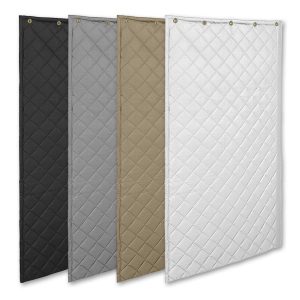Employees at industrial facilities are typically exposed to higher levels of noise than the average worker. Machinery in sawmills, compressor stations, and manufacturing plants can be very loud. This can far exceed the level of noise OSHA deems safe for an 8-hour shift. To combat the danger of NIHL (noise induced hearing loss), industrial hearing protection methods must be employed.
“Research has shown that 50% of the population will develop hearing loss and a large proportion of these will be due to noise, the majority of them being in work”, says Chris Evans of Atrium, a legal firm specializing in industrial disease such as noise induced hearing loss, “As an employer you have the legal obligation to protect your staff from noise or you would be liable for hearing loss compensation.”
Hearing preservation programs to counter excessive noise include the use of earplugs and sound barrier enclosures installed around machinery—but the use of earplugs may be hard to enforce, and individual enclosures for every piece of equipment is not always an option due to ease of access, ventilation, or cost. And while the equipment used in these operations is the source of the noise, there is something else in many of these facilities that can amplify the noise to dangerous volumes.

Hoover and Strong – Vented Acoustic enclosure for exhaust fan using PrivacyShield® acoustic blankets for noise reduction.
Hard surfaces – floors, ceilings, and walls—are common in industrial buildings. Blank concrete, drywall, or metal walls, floors, and ceilings are generally believed to be safer because they are free of clutter and obstruction that could cause issues with visibility or create a fire hazard. But these surfaces are also highly reflective to sound waves.
The more reflective surfaces there are in a space, the higher the RT60. RT60 is a measurement used in acoustics that stands for Reverberation Time. Reverberation, the accumulation of reflecting and deflecting sound waves off the rigid surfaces, is also the reason a room full of machinery is much louder if the walls are block, metal, or concrete. The sounds reverberate, building in intensity until you not only have initial sound signals reaching employees from equipment, but all the secondary and tertiary reflections reaching you seconds later. To lower sound intensity, you have to lower the RT60—the time it takes for all reverberations to end.
Tennessee Gas Case Study
Concerned with the operational safety and industrial hearing protection of its employees, Tennessee Gas set out to reduce the noise in one of the company’s largest compressor stations. The high volume was keeping workers from effectively communicating with each other. This was especially true if they were forced to use earplugs. Even worse, the workers were at risk of developing hearing loss if they chose to not wear the protection for long periods of time.
Tennessee Gas had to reduce the noise level to safer volumes by treating the building rather than individual compressors. This is because employees needed to have unrestricted access to the equipment, and clear visibility throughout the building.
Acoustical consultants recommended the walls and ceiling be lined with a sound absorbing and barrier composite. A material with these features would block sound transmission through the walls and ceiling. These features guard against potential noise complaints from neighbors. This material also absorbs sound waves inside the building, lowering the RT60 and sound intensity for workers. 800 individual PrivacyShield® Dual-Sided Absorptive Soundproofing Blankets were used to line the interior of the 40′ x 179′ x 28′ high building. PrivacyShield® Dual-Sided Absorptive Soundproofing Blankets are made of quilted fiberglass and a 1 lb./sq.ft. barrier.
Post-installation testing showed that the
Acoustical Blankets
Acoustical Blankets are not the only sound absorbing product suitable for industrial hearing protection. Wall panels, ceiling baffles and banners, and acoustical ceiling tiles are all available in heavy duty materials. These materials are easy to clean and perfect for these environments. To be sure you are purchasing a sound absorbing as opposed to purely sound blocking acoustical product, look for an NRC rating. NRC stands for Noise Reduction Coefficient and indicates how much sound a product will absorb instead of reflect. The NRC scale goes up to 1.00. This indicates a material that absorbs 100% of the sound waves that come into contact with its surface. Consult an acoustical consulting company or supplier to learn more about getting your facility tested and the treatment needed to increase worker safety by reducing RT60.
To learn more about how Acoustical Solutions can solve your noise control problems, use our contact form, call one of our Acoustical Sales Consultants at (800) 782-5742, or visit us on the web at acousticalsolutions.com.


